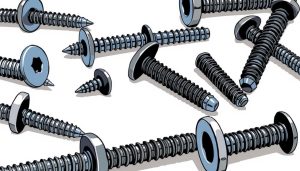In the world of machining, one of the most common challenges faced by professionals is the dreaded broken tap. These small, yet essential tools can snap during the threading process, leaving behind a stubborn fragment that can wreak havoc on your workpiece and disrupt your manufacturing operations. However, with the right techniques and specialized tools, tackling a broken tap doesn’t have to be a daunting task. This article will guide you through the step-by-step process of safely and effectively removing a broken tap, helping you get your machine back on track and maintain the high-quality standards your customers expect.
What Is a Broken Tap and Why Does It Happen?
In the world of machining, a broken tap is a common occurrence that can cause significant complications and delays in the production process. A tap is a tool used to create internal threads in a workpiece, but when it snaps or becomes lodged inside the material, it can lead to a range of issues that affect the overall machining operation.
Common Causes of Broken Taps in Machining
Several factors can contribute to the breakage of taps during the machining process. One of the primary causes is improper alignment or positioning of the tap in the workpiece, which can result in excessive torque and strain on the tool. Additionally, using the wrong tap size for the application or applying too much feed force can also lead to tap breakage. Inadequate lubrication and coolant flow can further exacerbate the problem, causing the tap to overheat and become more susceptible to breakage.
How Broken Taps Affect the Machining Process
The presence of a broken tap in a workpiece can have a significant impact on the overall machining process. When a tap breaks, it can damage the internal threads of the workpiece, rendering the part unusable. This can result in costly production delays and the need for rework or replacement of the affected component. Moreover, the extraction of the broken tap from the workpiece can be a time-consuming and challenging task, further adding to the overall cost and complexity of the machining operation.
| Tap Breakage Causes | Machining Complications | Workpiece Damage |
|---|---|---|
| Improper Alignment | Production Delays | Damaged Internal Threads |
| Excessive Torque | Increased Rework | Part Unusability |
| Incorrect Tap Size | Tool Extraction Challenges | Surface Defects |
To mitigate the risks and consequences of broken taps, it is essential for machinists and manufacturers to understand the common causes and implement proactive measures to prevent such occurrences. By addressing these issues, they can help ensure a more efficient and cost-effective machining process, ultimately benefiting the overall production quality and profitability.
Methods for Removing a Broken Tap
Dealing with a broken tap can be a frustrating experience, but there are several effective techniques to tackle the issue. Let’s explore the top methods for extracting a broken tap, ensuring a smooth and efficient machining process.
Using a Drill and Low Speed to Extract the Tap
One of the most common methods for removing a broken tap is the drill and low-speed extraction technique. This approach involves carefully drilling into the center of the broken tap, taking care not to damage the surrounding workpiece. By using a slow, controlled speed, you can gradually work the tap out of the hole without causing further breakage or distortion.
Using a Cold Chisel for Surface Breakage
When the broken tap is visible on the surface, a cold chisel can be an effective tool for removal. Gently tapping the chisel around the broken end can help to loosen and release the tap from the workpiece. This technique requires a steady hand and a keen eye to avoid damaging the surrounding material.
Employing Carbide Drills for Precision Removal
For more challenging tap extraction scenarios, investing in specialized carbide drills can provide a precise and controlled removal process. These drills are designed to penetrate the broken tap without compromising the integrity of the workpiece. By carefully selecting the appropriate drill size and speed, you can often extract the broken tap with minimal disruption to the overall machining operation.
| Tap Extraction Technique | Advantages | Considerations |
|---|---|---|
| Drill and Low-Speed Extraction |
|
|
| Cold Chisel for Surface Breakage |
|
|
| Carbide Drill Precision Removal |
|
|
By familiarizing yourself with these tap extraction techniques, drill removal method, and cold chisel tap removal, you can confidently tackle broken tap issues and maintain a seamless machining workflow. Remember to always prioritize safety and follow best practices to ensure successful and efficient tap extraction.

Specialized Tools for Tap Removal
When faced with a broken tap, specialized tools can make the removal process much more efficient and effective. Two key tools in the arsenal of tap removal experts are solid carbide tool makers drills and tapping extractors.
The Role of Solid Carbide Tool Makers Drills
Solid carbide tool makers drills are designed specifically for the task of removing broken taps. These high-performance drills offer several advantages over standard twist drills. Their carbide construction provides exceptional durability and wear resistance, allowing them to precisely drill through the tough material of the broken tap. Additionally, their specialized flute geometry and cutting edges are optimized for the controlled removal of the tap fragment, minimizing the risk of further damage to the workpiece.
Using Tapping Extractors for Safe Removal
Tapping extractors are another essential tool in the tap removal toolkit. These specialized devices grasp the broken tap fragment securely, allowing it to be safely extracted from the workpiece. Tapping extractors come in a variety of sizes and styles to accommodate different tap diameters and breakage scenarios. By using a tapping extractor, you can remove the broken tap with minimal disturbance to the surrounding material, ensuring a clean and precise result.
| Tool | Key Benefits |
|---|---|
| Solid Carbide Tool Makers Drills |
|
| Tapping Extractors |
|

By leveraging the power of solid carbide tool makers drills and tapping extractors, machinists and metalworkers can tackle the challenge of broken taps with confidence, ensuring a safe and effective removal process that preserves the integrity of the workpiece.
Tips and Tricks for Preventing Broken Taps
Maintaining the integrity of your taps is crucial to ensuring a smooth and efficient machining process. By following best practices for proper tap usage and material selection, as well as maintaining the correct speed and feed settings, you can significantly reduce the likelihood of encountering broken taps.
Proper Tap Usage and Material Selection
The first step in preventing tap breakage is to ensure that you are using the right tap for the job. Consider the material you are working with and select a tap that is designed to handle the specific challenges of that material. Additionally, be mindful of the tap’s geometry and ensure that it is suited for the application. Proper lubrication and regular tool maintenance can also go a long way in preserving the integrity of your taps.
Maintaining the Correct Speed and Feed Settings
Achieving the optimal balance between speed and feed is crucial in preventing tap breakage. Pushing the tapping process too quickly or applying excessive pressure can quickly lead to tap failure. Consult the manufacturer’s recommendations and adjust your machining parameters accordingly. Regular monitoring and adjustments based on the specific workpiece material and tool conditions can help you maintain the ideal settings and minimize the risk of tap breakage.





